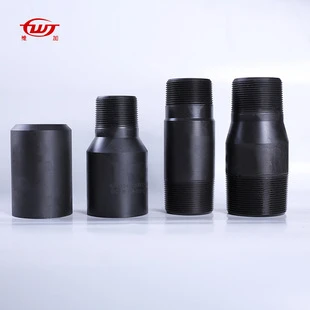- Afrikaans
- Albanian
- Amharic
- Arabic
- Armenian
- Azerbaijani
- Basque
- Belarusian
- Bengali
- Bosnian
- Bulgarian
- Catalan
- Cebuano
- Corsican
- Croatian
- Czech
- Danish
- Dutch
- English
- Esperanto
- Estonian
- Finnish
- French
- Frisian
- Galician
- Georgian
- German
- Greek
- Gujarati
- Haitian Creole
- hausa
- hawaiian
- Hebrew
- Hindi
- Miao
- Hungarian
- Icelandic
- igbo
- Indonesian
- irish
- Italian
- Japanese
- Javanese
- Kannada
- kazakh
- Khmer
- Rwandese
- Korean
- Kurdish
- Kyrgyz
- Lao
- Latin
- Latvian
- Lithuanian
- Luxembourgish
- Macedonian
- Malgashi
- Malay
- Malayalam
- Maltese
- Maori
- Marathi
- Mongolian
- Myanmar
- Nepali
- Norwegian
- Norwegian
- Occitan
- Pashto
- Persian
- Polish
- Portuguese
- Punjabi
- Romanian
- Russian
- Samoan
- Scottish Gaelic
- Serbian
- Sesotho
- Shona
- Sindhi
- Sinhala
- Slovak
- Slovenian
- Somali
- Spanish
- Sundanese
- Swahili
- Swedish
- Tagalog
- Tajik
- Tamil
- Tatar
- Telugu
- Thai
- Turkish
- Turkmen
- Ukrainian
- Urdu
- Uighur
- Uzbek
- Vietnamese
- Welsh
- Bantu
- Yiddish
- Yoruba
- Zulu
bull plug pipe layout
Understanding Bull Plug Pipe Layouts in Piping Systems
In industrial applications, effective fluid transport is crucial for achieving operational efficiency and reliability. One of the key components in piping design is the bull plug. This article explores the concept of bull plugs in pipe layouts, their functions, materials, and considerations for implementation in various systems.
What is a Bull Plug?
A bull plug is a type of pipe fitting used to seal off the end of a pipe. It is usually shaped like a cylinder with a rounded end and is designed to fit snugly into the end of the pipe. The bull plug can be used in various piping applications, including water supply, gas distribution, and chemical processing. It serves as a barrier to prevent leaks and is essential for maintaining the integrity of the piping system.
Applications of Bull Plugs
Bull plugs are particularly useful in situations where a temporary closure of a pipe is needed. For example, in maintenance scenarios, where sections of the piping may need to be isolated for repairs or replacement, bull plugs provide a convenient means of sealing off the line. Moreover, they are often employed in systems that require pressure testing. By sealing off the ends of the pipes, technicians can assess the integrity of the piping system without risking fluid escape.
Materials and Design
Bull plugs are manufactured from various materials depending on the specific requirements of the application. Common materials include
bull plug pipe layout

- Steel Durable and capable of handling high pressures, steel bull plugs are often used in oil and gas pipelines. - PVC and CPVC These plastic materials are ideal for less demanding environments, such as water supply systems. - Bronze and Brass These materials are typically used in plumbing applications and are resistant to corrosion.
The choice of material greatly influences the bull plug's performance, including its resistance to temperature fluctuations, chemical exposure, and pressure. Additionally, bull plugs come in various sizes to fit different pipe diameters, and they can be designed with or without threads based on the system requirements.
Installation Considerations
When planning to implement bull plugs into a piping layout, several factors should be taken into account
1. Pressure Ratings Ensure that the bull plug can withstand the internal pressure of the system, including any potential surges that may occur. 2. Temperature Compatibility The material of the bull plug must be suitable for the temperature range of the fluids being transported to prevent failure. 3. Ease of Access Consider the future need for maintenance, and position the bull plugs so they can be easily accessed if repairs or adjustments are needed. 4. Regulatory Compliance Ensure that the use of bull plugs meets local and national codes and standards for safety and environmental protection.
Conclusion
In summary, bull plugs are a vital component in the design and maintenance of piping systems. They provide effective sealing solutions that play a crucial role in ensuring the safety and efficiency of fluid transportation. Understanding their applications, material choices, and installation considerations is essential for engineers and technicians involved in piping layout design. By selecting the right bull plugs for specific applications, industries can enhance the reliability of their systems, ultimately leading to smoother operations and reduced downtime.
-
Tubing Pup Joints: Essential Components for Oil and Gas OperationsNewsJul.10,2025
-
Pup Joints: Essential Components for Reliable Drilling OperationsNewsJul.10,2025
-
Pipe Couplings: Connecting Your World EfficientlyNewsJul.10,2025
-
Mastering Oilfield Operations with Quality Tubing and CasingNewsJul.10,2025
-
High-Quality Casing Couplings for Every NeedNewsJul.10,2025
-
Boost Your Drilling Efficiency with Premium Crossover Tools & Seating NipplesNewsJul.10,2025







